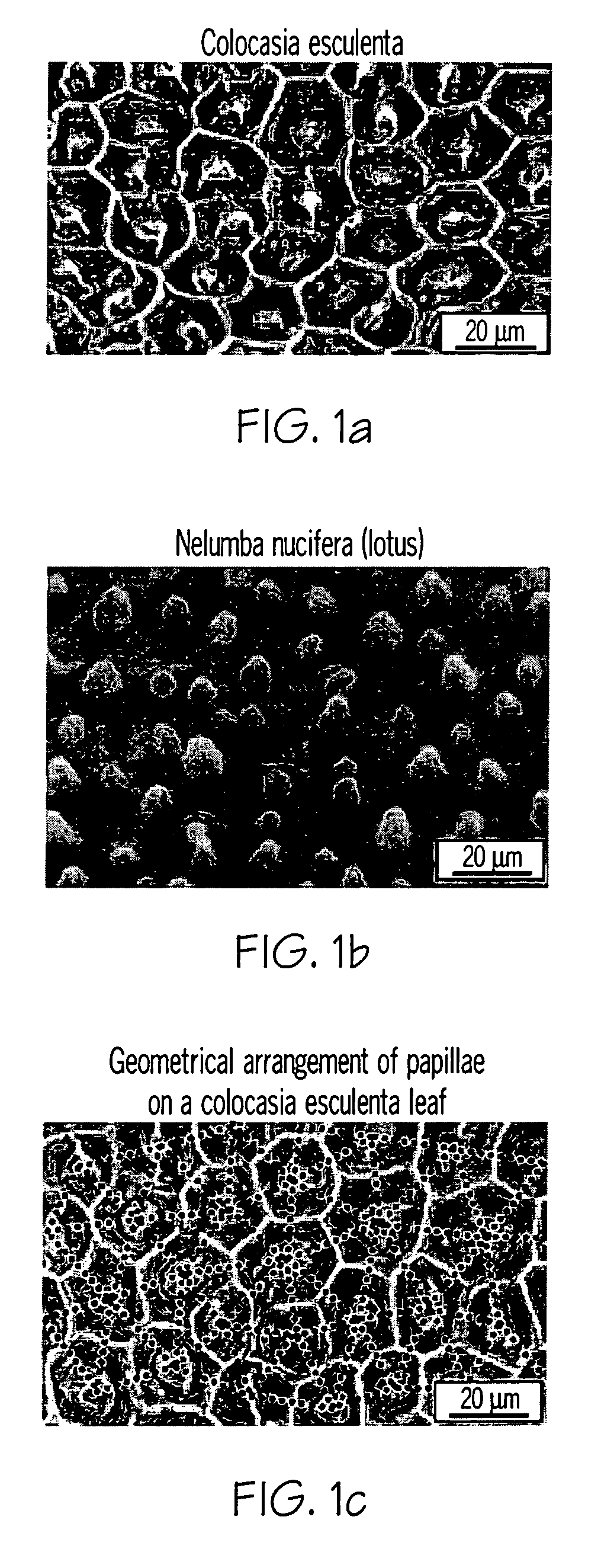Hydrophobic surface with geometric roughness pattern
a hydrophobic surface and geometric roughness technology, applied in the field of roughened hydrophobic surfaces, can solve the problems of increasing adhesion/friction, increasing frictional forces on wetted surfaces, and affecting the quality of the surface,
- Summary
- Abstract
- Description
- Claims
- Application Information
AI Technical Summary
Problems solved by technology
Method used
Image
Examples
Embodiment Construction
[0034] Embodiments of the present invention relate to hydrophobic surfaces adapted to repel liquid contacting the surface. The hydrophobic surface comprises a substrate, which is at least partially hydrophobic. Due to its hydrophobicity, the substrate has a contact angle to liquid of 90° or greater. The substrate may comprise a hydrophobic material, or may comprise a hydrophilic material with a hydrophobic film applied thereon. The hydrophobic surface also comprises a roughened surface structure oriented on the substrate material. The roughened surface structure comprises a plurality of asperities, or elevations, arranged in a geometric pattern according to a roughness factor. Typically, the asperities have a maximum height of about 100 μm. The roughness factor is a mathematical algorithm characterized by a packing parameter p that equals the fraction of the surface area of the substrate covered by the asperities of the roughened surface structure. The packing parameter p has a valu...
PUM
| Property | Measurement | Unit |
|---|---|---|
| contact angle | aaaaa | aaaaa |
| aspect ratio h/r | aaaaa | aaaaa |
| contact angle | aaaaa | aaaaa |
Abstract
Description
Claims
Application Information
 Login to View More
Login to View More - R&D
- Intellectual Property
- Life Sciences
- Materials
- Tech Scout
- Unparalleled Data Quality
- Higher Quality Content
- 60% Fewer Hallucinations
Browse by: Latest US Patents, China's latest patents, Technical Efficacy Thesaurus, Application Domain, Technology Topic, Popular Technical Reports.
© 2025 PatSnap. All rights reserved.Legal|Privacy policy|Modern Slavery Act Transparency Statement|Sitemap|About US| Contact US: help@patsnap.com



